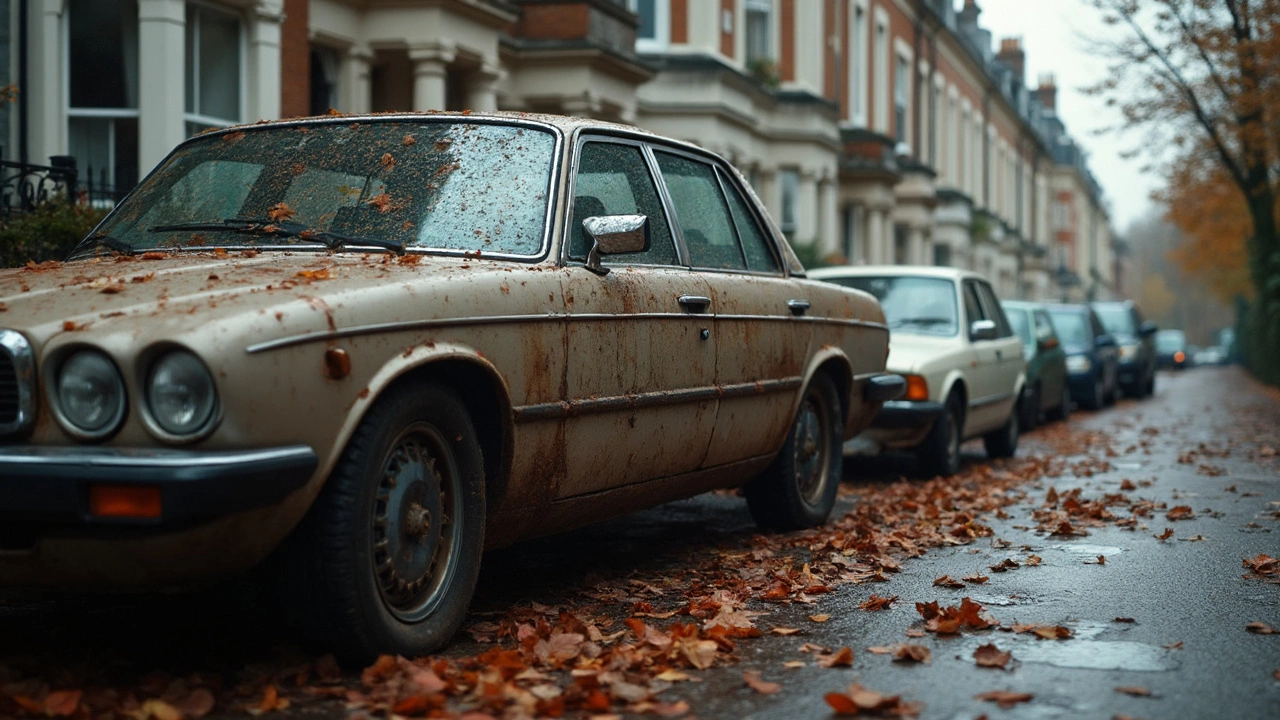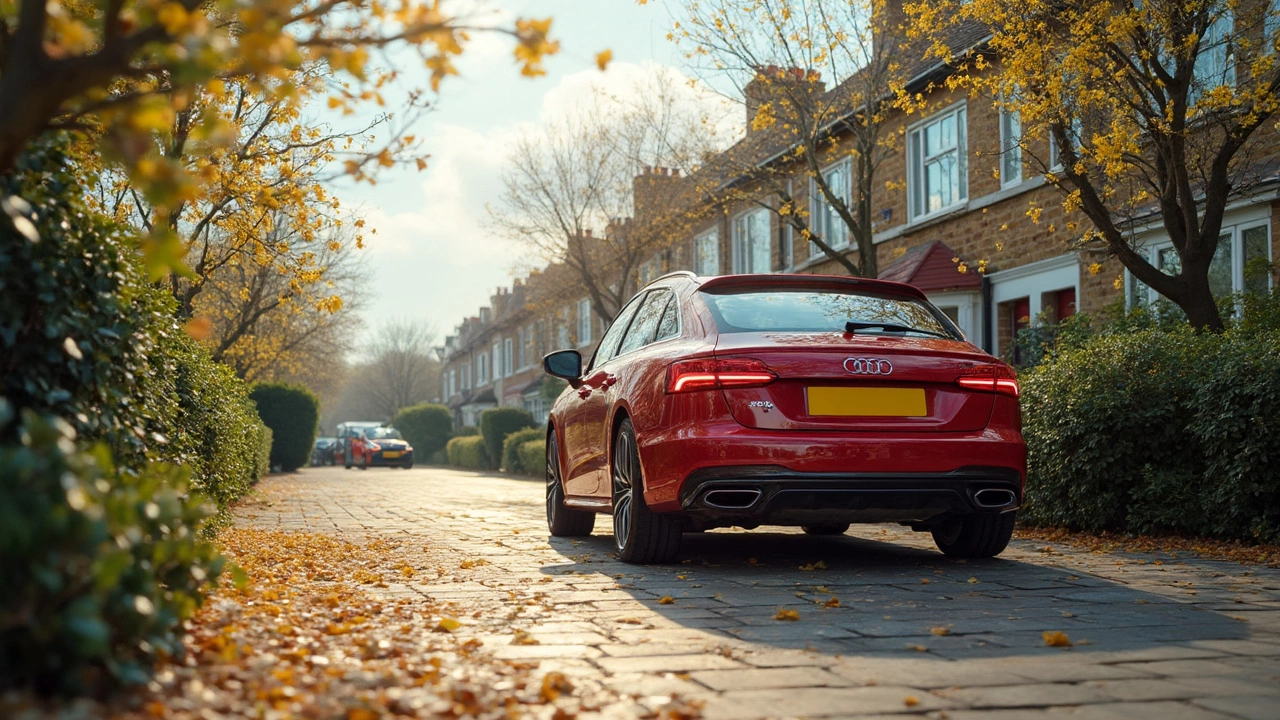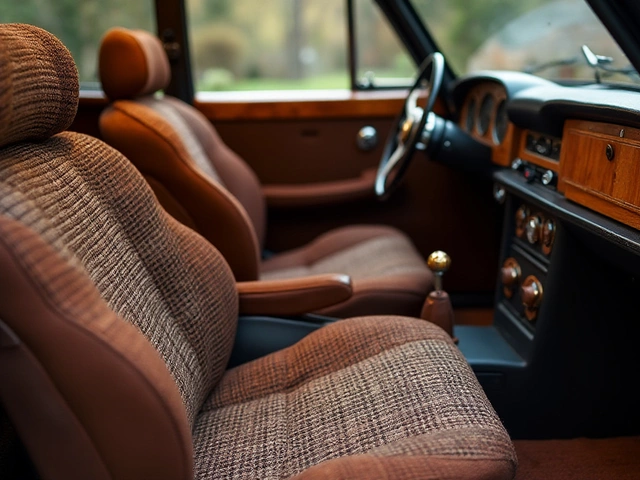Ever spent an afternoon detailing your car, only to wake up to streaks, dust, or pollen stuck all over your hard work? When you detail matters almost as much as how you detail. Temperature swings, sun, salt, and falling leaves all play a role in how your car looks—and how long that clean feeling lasts.
If you think every season is pretty much the same for car detailing, your microfiber towels are in for a surprise. The right moment can stretch the effects of a good detail job and help every cleaning product in your kit work its best. Knowing when to break out your supplies is a game-changer, especially if you want your ride looking sharp without redoing the whole process a week later.
- Does Timing Matter for Detailing?
- Why Spring is Popular (But Not Perfect)
- Summer Sun and Car Detailing
- Dealing With Fall Grime and Leaves
- Winter Detailing: Myths and Must-Know Tips
- Choosing the Best Season for You
Does Timing Matter for Detailing?
The timing seriously matters when it comes to car detailing kits. You don’t want to put in the effort just to have pollen, rain, or heat undo everything the next day. Weather and temperature aren’t just about keeping you comfortable during a wash—they actually change the way cleaning products work on your car’s surface.
For example, waxing your car when the surface is too hot can make the wax hard to buff off, sometimes leaving behind streaks or cloudy spots. Freezing temperatures mean soap and water might freeze before you even finish the job. Humid weather can cause streaks or slow down drying time, and things like early-morning dew or unexpected rain can mess up hours of cleaning in a heartbeat.
- Dust, pollen, and sap: These usually peak in the spring. If you detail at the wrong moment, your freshly cleaned car will be sticky or dusty by the end of the day.
- Road salt: This spikes in winter. It’s a nightmare for paint and undercarriage. Clean too early and winter’s not done; wait too long, and you risk corrosion.
- Tree debris and leaves: Fall is a magnet for this, making it hard to keep your car’s shine for long.
There’s a sweet spot in every season. According to a 2023 survey by a major detailing brand, 68% of people who washed their cars in mild weather reported the detailing lasted two weeks or more, compared to just 37% cleaning in extreme cold or heat. That means your effort goes further when the timing’s right.
So, when someone asks, “Does timing matter for car detailing?”—it’s a clear yes. Choosing the right moment helps your products work better, saves you time, and keeps your car looking sharp for longer.
Why Spring is Popular (But Not Perfect)
Ask anyone who’s into car detailing and they’ll tell you: spring is when the itch to clean kicks in strong. Blame months of winter grime, salt, and slush stuck to your car. It’s no surprise that auto stores see a sales jump for car detailing kits as soon as the snow melts. The weather is milder, daylight lasts longer, and most people have a little more energy for projects. Plus, scrubbing off that crusty winter buildup just satisfies like nothing else.
But going for a spring cleaning isn’t always the home run people expect. First, pollen. In many places, that yellow-green dust hits like a truck right as you finish detailing. Spend all day on your paintwork and wheels, and you might wake up the next morning to find your ride looking like a forgotten chalkboard. If you have allergies, it’s even worse. And then there’s the rain: April showers don’t just bring May flowers, they bring water spots, muddy splashes, and extra clean-up.
Ready for a fun fact? According to a survey by the Car Care Council, nearly 60% of drivers choose spring as their regular car cleaning season. But less than half feel their detailing lasts more than a week due to pollen and rain.
Spring has other quirks, too. Temperatures may be better than winter, but early mornings can still be frosty. Cleaning products—especially waxes and sealants—don’t bond as well under 55°F (13°C). That means you might get less shine and protection if you rush it before it really warms up.
- Detail after pollen season if possible, or schedule a quick rinse after high pollen days.
- Choose a dry, cloudy day when the temperature is at least 55°F—products just work better that way.
- Store your car detailing kit inside between uses to keep products from breaking down in fluctuating spring temps.
Spring may be the unofficial king of car cleaning, but even kings have their headaches. If you want your hard work with that car detailing kit to last, timing and strategy matter just as much as elbow grease.
Summer Sun and Car Detailing
When summer rolls in, detailing your car gets tricky for a bunch of reasons. Sure, the days are longer and you’re more likely to have clear skies, but heat is both a friend and an enemy. The pros all agree: hot surfaces mess with nearly every product in your car detailing kits.
Here’s what actually happens: when you apply wax or soap on a really hot day, it dries too fast. That makes buffing out wax or rinsing off soap way harder. You’ll often get streaks or stubborn water spots. Plus, direct sun bakes on any leftover chemicals or grime, hurting your paint.
If you check the labels on most car detailing kits, you’ll see a warning about not using certain products in direct sunlight or extreme heat. They’re not exaggerating. A study by Meguiar’s (the detailing company) actually found wax could haze up in seconds if temps get above 85°F—sometimes before you even finish applying it across a hood.
Here are some tips to keep your car looking sharp even when the sun’s blazing:
- Work in the shade—a garage, tree, or even using a pop-up canopy helps a ton.
- Detail your car early in the morning or later in the evening. Surfaces are much cooler, which gives you more working time.
- Rinse and dry small sections at a time. Don’t soap up the whole car and wait—the water evaporates fast and leaves spots.
- Use microfiber towels to dry, not basic cotton ones. They soak up more and leave less behind.
- Look for spray waxes or quick-detailers labeled safe for hot or sunny days. Some brands spent years perfecting formulas for this exact thing.
People often forget about the inside too. Summer heat can roast the interior, fade plastics, and dry out leather. A dash sunshade or a windshield cover is worth a hundred detailings. If you use cleaning sprays or conditioners on dashboards or seats, let the car air out with the doors open for a few minutes to avoid steamy chemical smells.
So, is summer the best time for car detailing? The answer is: only if you’re smart about it. With the right timing and tricks, your car can absolutely shine—just don’t bake your hard work in the midday sun.

Dealing With Fall Grime and Leaves
Fall might look beautiful with all those changing colors, but your car probably disagrees. Wet leaves, tree sap, and early rain basically set up booby traps for your paint. If you leave that stuff sitting, you risk stains that don’t just wash off next time. In fact, studies have shown that tree sap and leaf tannins can pollute clear coat in as little as a week if not removed, leading to costly paint correction down the road.
Here’s why car detailing kits come in handy during autumn. Sap, pollen leftovers, and stuck-on leaves need more than a quick rinse. Your basic garden hose just won’t cut it if you want to get rid of the grime and avoid those ugly brown stains or even mild scratches from gritty debris. Waxing after a full detail in the fall actually helps build a shield against that mess.
- Start every clean with a thorough rinse to get leaves, dust, and loose dirt off.
- Use pH-balanced soap so you don’t strip old wax or sealant, which you really need this season.
- Pay extra attention around wipers, grilles, and vents since leaves love to hide and clog stuff up.
- Don’t just focus on paint—clear out gunk from door jambs and window seals to stop staining and sticky buildup.
A pro detailer once told me that if you find sap or stains, the longer you wait, the harder they set. Specialized tar and sap removers are better than regular shampoo here. Buffing in a fresh layer of wax or synthetic sealant after cleanup keeps new grime from bonding so easily, so washing takes half the effort next time around.
| Common Fall Mess | Time to Cause Damage |
|---|---|
| Tree Sap | 1-2 weeks |
| Wet Leaves | 3-5 days |
| Pollen residue | 1 week |
Bottom line: don’t write off autumn. It’s honestly one of the seasons when car detailing can save you the most time and money if you keep up. You handle the grime now, you dodge those pain-in-the-neck repairs later.
Winter Detailing: Myths and Must-Know Tips
Most people think winter is the worst time for car detailing. Not true. Sure, it’s colder, and there’s plenty of salt and grime, but waiting until spring can actually make things worse for your paint and wheels. Road salt and sand eat away at your clear coat, and if you let them sit for months, they speed up rust. That’s exactly why car detailing kits matter in the cold months—protect now, save headaches later.
A big myth is that washing your car in winter is pointless because it’ll just get dirty again. Fact is, routine washes in winter are actually more important than in summer, since you’re protecting your car from corrosive leftovers like salt, slush, and de-icers. Even Consumer Reports has noted how untreated winter grime can cut right through protective coatings and paint.
But detailing in winter is different—here’s what you need to know:
- Pick mild days: If you can, wash and detail on days above freezing (ideally above 40°F/4°C), so water doesn’t freeze on your panels. Too cold, and soap turns to slush, plus doors and locks can freeze shut.
- Use proper rinse: Go for touchless or self-serve washes if at-home isn’t possible. Blast off underbody salt—the nasty stuff collects there first.
- Quick dry matters: Always dry thoroughly with microfiber towels. Don’t let water beads freeze into spots or ice sheets.
- Add a winter wax layer: Extra wax or sealant from your detailing kit helps form a barrier against salt and grime. Spray-on sealants are your friend when it’s cold.
- Clean tires and trim: Rubber and plastic dry out in winter. Protect them so you avoid cracking and fading come spring.
Did you know? Data from AAA shows that drivers in snowy states spend up to $500 more per year on corrosion repairs—mostly thanks to salt-treated roads. Skipping winter detailing can actually cost you more long-term.
For the folks with garages, that’s a huge bonus—do the job indoors for better results. But even outdoor detailers can make a difference when they follow winter-specific steps. Protecting your car when it’s cold doesn’t just keep it looking sharp. It means you won’t face extra work (or pricey repairs) once things finally defrost.
Choosing the Best Season for You
Picking the best time for car detailing isn’t just about looking out the window and hoping for sun. Each season has its pros and cons—your choice depends on where you live, your daily driving, and how picky you are about your ride staying perfect. Here’s what to weigh before grabbing your car detailing kits and rolling up your sleeves.
Spring is popular because it gets rid of winter’s mess—think salt, sand, and grime. But this season means pollen sticks to everything. If you detail too early, that yellow film can wreck your fresh polish. Wait until the worst pollen has passed, usually late spring, unless you like repeating your work.
Summer is hot, so waxes and cleaners dry fast. That can mean streaks if you’re not quick. Still, warmer weather helps water evaporate, avoiding those annoying water spots. Just try to detail in the morning or evening instead of midday, and work in the shade.
Fall offers mild weather and less pollen, but watch for leaves—they can scratch if they land on and get dragged across your paint. Fall detailing helps protect your car before winter hits, especially the undercarriage if you’re in a snowy area.
Winter detailing sounds tough, but it’s not impossible. If you live in a place with road salt, it’s crucial to keep your paint and wheels protected. Use rinse-less or waterless wash products when it’s freezing. Heated garages are your friend here. Most folks just focus on keeping salt and grime at bay until spring.
Here’s a quick comparison to help you decide:
| Season | Main Challenge | When to Detail | Pro Tip |
|---|---|---|---|
| Spring | Pollen, rain | Late spring, after pollen peaks | Use sealants to fight pollen sticking |
| Summer | Heat, sun | Early morning or evening | Shade is your friend—avoid hot panels |
| Fall | Leaves, sap | Mid-fall, before leaf buildup | Clean regularly to avoid scratches |
| Winter | Salt, grime | When weather allows, or in garage | Focus on undercarriage and wheels |
The bottom line: there’s no single best time for car detailing everywhere. Pick your season based on local weather patterns, your car’s exposure, and your schedule. If you can only pick one big clean, late spring or early fall is usually a safe bet for most drivers.






